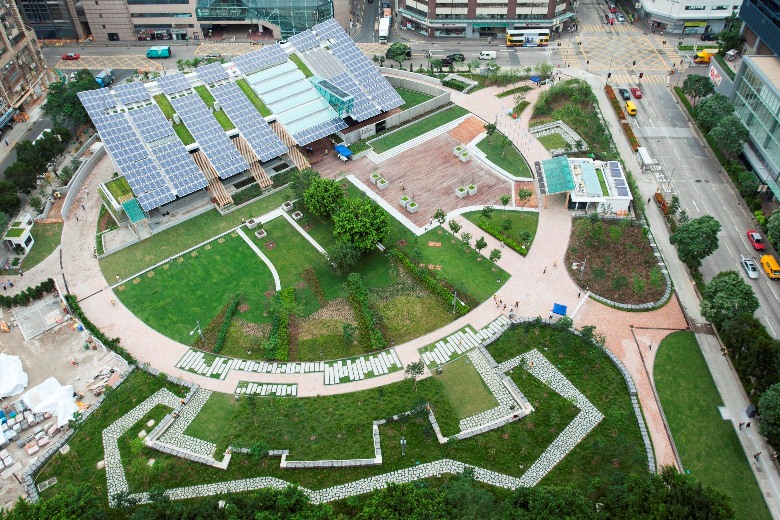Hong Kong unveils its first zero-carbon building


HONG KONG — Hong Kong has unveiled its first “zero-carbon” building. But it is unlikely that others will follow.
The three-storey structure, designed to be energy efficient, runs on solar power and biodiesel derived from waste cooking oil. These renewable energy sources will provide the necessary electricity, and then some: the developers expect the system to generate a surplus of power, which will be delivered to the electricity grid, offsetting the carbon emitted during the building’s construction.
The building is scheduled to officially open to the public in September as office space for the Hong Kong Construction Industry Council, an advisory agency that led the project along with the local government. An events hall will also be available for rent.
But far from considered the beginning of a trend, the building, whose roof is covered almost entirely with solar panels, is instead touted by developers as educational and “a showcase project to inspire.”
E.U. countries are increasingly mandating that new homes be built to have zero net carbon emissions. And in the U.K., all new houses are required to be carbon neutral by 2016. Yet such goals are seen as impossible for a place like Hong Kong. The government's latest proposed target is to reduce the highly polluted city's carbon intensity by 50% - 60% by 2020, using 2005 as a baseline.
Sam Hui, a professor of mechanical engineering at the University of Hong Kong, said he does not expect there to be more zero-carbon buildings built in the city. “I think in Hong Kong, this project will be the only one,” he said. “Most buildings in Hong Kong are high-rises, where energy intensity is high and zero carbon is hard to achieve.”
Designers also chose building materials like glass and wood from nearby sources to lower the carbon footprint of the construction process. Iris Cheng, a spokesperson for HKCIC, said some of the concrete from the site's previous structure was retained and used in the surrounding grassy park area.
Developers say the zero-carbon building is 45% more efficient than standard designs. It demonstrates various design features that help improve ventilation, minimizing the need for air conditioning in a city that becomes stiflingly hot during the summer months.
But visitors are encouraged to remove unnecessary layers of clothing – the thermostat is set at 29 degrees Celsius – and lockers are provided for storing them.
This post was originally published on Smartplanet.com